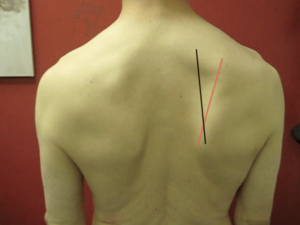
Progress Doesn’t Happen in Isolation
I’ve got an important point to make today, and I think it’s best illustrated with a hypothetical story.
Let’s say that a 14-year-old, 6-0, 140-pound kid – we’ll call him Joey – comes in to Cressey Sports Performance and does an evaluation with me in September. He says that he currently throws 70-72mph, but wants to hit 80mph by the start of the upcoming spring baseball season – and that he’s willing to do anything to reach that goal.
We put Joey on a great strength and conditioning program – lifting, sprint/agility/jumping challenges, medicine ball drills, arm care exercises, self-myofascial release, and mobility work – and he crushes it with his nutrition. Joey gets on a solid throwing program, and fine-tunes his grip on the baseball and some mechanical flaws with our pitching coordinator.
Joey gets manual therapy with our massage therapist, and also makes a dedicated effort to improve his sleep quality and quantity. He hangs out with a bunch of professional baseball players in a motivating environment, and even reads some sports psychology books to prepare himself mentally. Joey crushes his offseason with us – and puberty is still kicking in to help the cause.
And, the results show up in the spring: Joey is consistently pitching harder than 80mph, surpassing his goal.
It must have been the lifting, right? Or the medicine ball work? Or the arm care? Or the nutrition improvements and weight gain? Or the mechanical changes? Or a simple grip adjustment on his fastball? Or better sleep? Or just the gains associated with puberty?
What I also failed to mention is that Joey was taking algebra in school. He also shoveled his driveway whenever it snowed. And he stopped eating gluten because he felt like it made him bloated. And he got a new pair of sneakers. And his mother switched from a minivan to a SUV. Joey even developed a weird ritual of half-naked shadow boxing in the mirror every night with the Spice Girls playing in the background. You’ve got to have a routine, right?
Of course, everyone takes note of Joey’s crazy progress and asks him what the “secret” was. How does Joey respond? Puberty, gluten, the minivan, and his Spice Girls infatuation are all sensitive subjects he doesn’t want to publicly discuss, so those are off the table. Nobody gets excited hearing about algebra, sneakers, grip adjustments, or mobility work, so those are lame discussion points for the local newspaper interview. Hanging out with professional baseball players seems like a cooler story line, though, so that’s what he goes with: his progress all had to do with environment.
Nevermind the fact that Joey gained 30 pounds and started sleeping more than six hours per night. And, forget that he can actually touch his toes and do a body weight lunge without tipping over. And, overlook the fact that he is no longer throwing accidental cutters on every pitch because his delivery was so out of whack. Heck, those old shoes may have been terribly constructed and put Joey into horrible positions in his pitching delivery.

I know what you’re saying: this is an extreme example – and you’re right. However, we see a modified version of it all the time. Tom Brady refuses to eat tomatoes. Marshawn Lynch eats Skittles during games. Chris Sale needs to eat fast food to keep his weight up.
Usually, progress is incredibly multi-factorial. The results come not just from a lot of different directions, but from the synergistic interaction of many factors. And, sometimes there are other factors that may confound how we evaluate the path to success.
Tom Brady is still going to be an elite NFL quarterback if he has tomatoes for dinner the night before a game.
The 40 calories worth of Skittles Marshawn Lynch eats on gameday probably have zero impact on his performance.
Chris Sale’s slider is going to be absolutely filthy even if he chooses pizza over chicken, broccoli, and rice.
And, in our example above, Joey’s progress was completely unrelated to a myriad of things that took place. But, that doesn’t mean we can ever really know what percentage was related to strength and conditioning vs. pitching instruction vs. nutrition vs. a host of other factors. We just know that success comes for a variety of reasons, so you have to check a lot of boxes to determine what contributed to that success. And, you have to recognize that unless you have perfectly controlled research studies, you’ll likely have a very hard time isolating where the success really originated.
A perfect example of this is the debate on posture’s impacts on pain and performance. Anecdotal evidence tells us that it does make a difference, but the research is actually shockingly inconclusive in this regard; we just don’t know exactly how big a role (if any) that it plays in one’s ability to stay healthy.
If you’re looking to learn more about the controversial link between posture and performance, I’d encourage you to check out my popular resource, Sturdy Shoulder Solutions. I delve into this subject – along with many others – in great detail.




